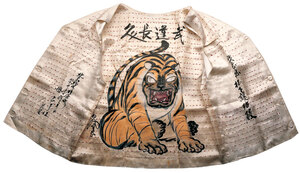Our
discussion of Japanese Internment art inspired me to look further into the
topic. I stumbled upon this NPR
article about an exhibit in the Smithsonian in Washington D.C.
The
article starts by introducing Noman Mineta, a Japanese man who spent time in
the internment camps as a child, that ended up serving in congress and as
Commerce Secretary under President Bill Clinton. By using him an example, Stamburg (the author) provides an
example of firsthand experience from someone the reader can respect as an
intellectual and public patron.
Mineta explains that they had “no furniture…all you get is four blank
walls and one light bulb.” Though
this situation was dire, it provided an opportunity for great creative
expression through art.
What
I found most interesting about the pieces included in the article is their
tremendous detail and workmanship.
The interned were forced to use “whatever materials they could find,”
and yet they were still able to create fantastic pieces of art. For example, a cream-colored vest is on
display from the Amache camp in Colorado, decorated with “1000 red, French-tied
knots.” It is surprising to me
that in such horrible and hopeless conditions a mother was able to create such
an elaborate vest for her son.
According to the article, the vest “was passed around in the camp, and
this was in order to provide strength and good luck for the person it was given
to.” In other words, art wasn’t
only a way to express feelings and creativity; it also served as a way to
maintain community and Japanese American culture.
Another
interesting fact is that many of the artists in the camps had never been
artists before. After entering the
camps, they harnessed their artistic skills - a “wonder…[that they] could
create things of beauty…in such adversity.” And thus, a beautiful thing stemmed from oppression and
horror, providing a sense of hope for generations of Japanese Americans in the
years to come.
http://www.npr.org/templates/story/story.php?storyId=126557553
http://www.npr.org/templates/story/story.php?storyId=126557553

No comments:
Post a Comment